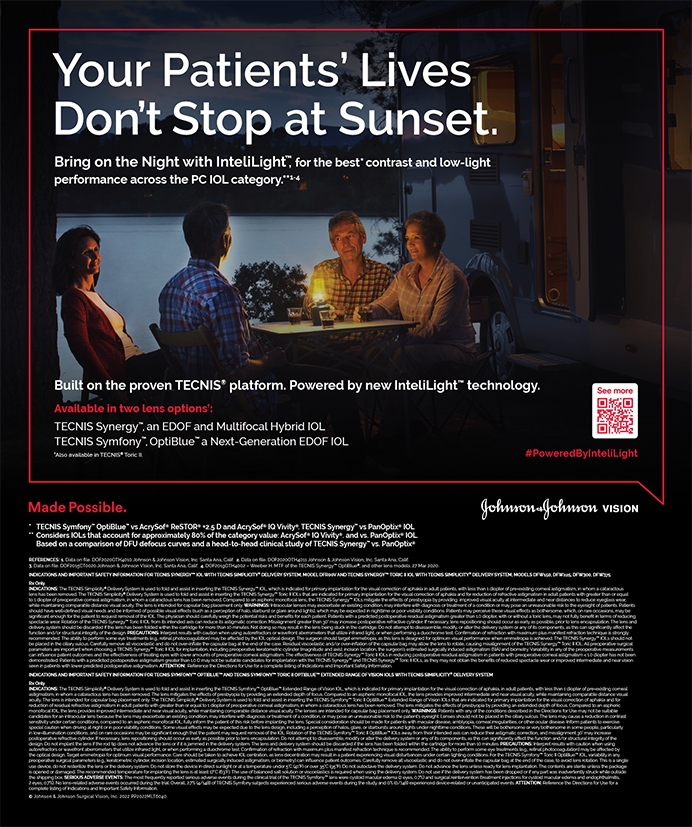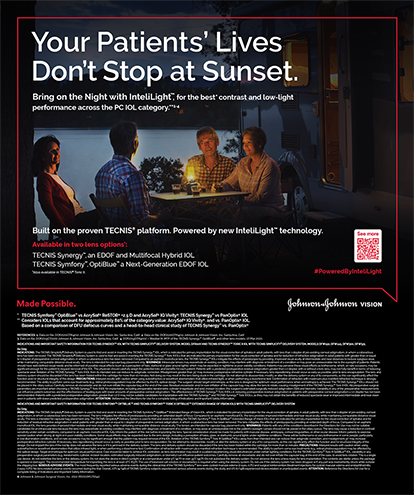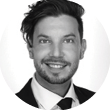
I always wanted a life less ordinary, and being an ophthalmologist has certainly given me one.
During medical school, I had to have major surgery, and I will be forever grateful to the amazing surgeons who saved my life. My recovery was tough, both physically and mentally. I can vividly recall lying in the hospital recovering, with tubes and lines going in and out of me, and thinking, “If I get out of here, I’m going to do everything I’ve ever wanted to do.” This experience forced me to become more resilient and provided me with a greater capacity for empathy. It also reminded me that, in the blink of an eye, my whole life could change, so I should make the most of every minute and do what I love.
I had always enjoyed art and making things, but I found that studying medicine sucked the creative spirit out of me. I was reading journals instead of novels and drawing the visual pathway rather than painting. After completing my first year as a doctor, I had fallen completely out of love with my job, so I quit and left New Zealand for the golden beaches of Australia. It wasn’t long before I received a call from the late Professor Gordon Sanderson, MNZM BSc(Ophthalmic Optics), FBOA, asking if he could persuade me to join the Ophthalmology Department in Nelson, New Zealand—a beautiful small town bursting with artists. How could I refuse? I thrived in Nelson and realized that I did not have to be a stereotypical, boring doctor to be successful.
Another pivotal moment was when I met my fellowship supervisor and mentor, Professor Michael Goggin, FRCSI(Ophth), FRANZCO, FRCOphth, MS. He showed me how to translate my creative efforts to the OR, research ideas, and teaching, the last of which has become a real passion. Good refractive surgery is an artistic process. It requires visualizing what you want to achieve and considering the best methods to harness light to create the most personal images for patients. I’m grateful that my career allows me so much creative thinking and activity while also giving me time to pursue artistic and sporting passions outside the clinic.
Creative Pursuits
I have always been a creator—from drawing, painting, and woodcut printing to sculpture, sewing, and even papier-mâché. As in my work, when it comes to drawing, I am a bit of a perfectionist. I like to use fine-tipped pens and draw intricate images (Figure 1). I have always drawn detailed works, and perhaps that is what helped me with the dexterity required for ophthalmic surgery. My painting, on the other hand, is expressionist and messy. Splattering paint onto a canvas can be a therapeutic experience, especially after a long day in the clinic. My favorite project was building a giant, waving, cat piñata out of wire and papier-mâché for my friend’s travel-themed wedding. It was so large that I could barely squeeze it out of my apartment (Figure 2). Recently, I have been making stop-motion movies (Figure 3). Creating small sculptures and often working backward to figure out how to make a particular action appear smooth is a lot of fun. Taking hours to make 10 frames of film that translate to 1 second of video to watch can also be frustrating!
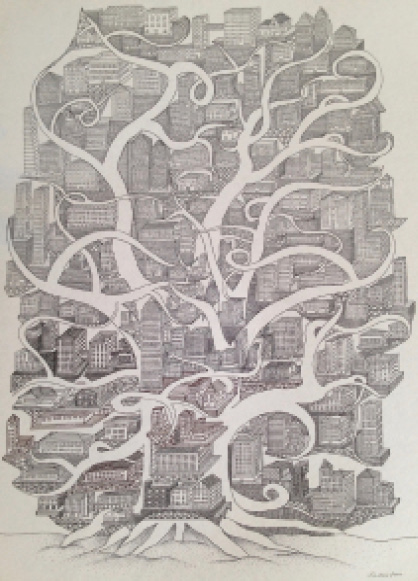
Figure 1. One of Dr. LaHood’s drawings.
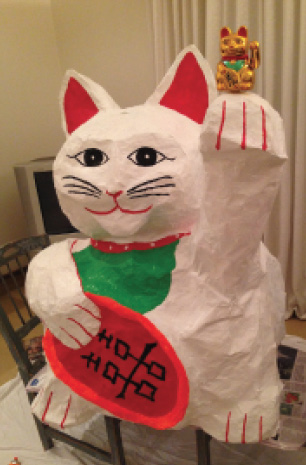
Figure 2. The cat piñata that Dr. LaHood made out of wire and papier-mâché for a friend’s travel-themed wedding.

Figure 3. A frame from one of Dr. LaHood’s homemade stop-motion animated videos.
Sneakers
I have been interested in sneaker culture for a long time and got into collecting sneakers after a trip to Hong Kong, where I saw options that aren’t available in Australia and New Zealand. The sneaker market took off recently, with exclusive collaborations and limited-number collections selling out in seconds. I collect sneakers because I like them, not based on their resale potential. I enjoy knowing the stories behind different designs and, like any sneaker enthusiast, would love to have my own personalized Nike one day! When I was queuing overnight outside a Foot Locker on the main street in Auckland for a new sneaker release the next morning, I enjoyed talking about sneakers with other fans, although I suspect they thought it was odd for an eye surgeon to be there.
My love of sneakers and enjoyment of painting and sewing have led me to customize sneakers (Figure 4). Dying, painting, and altering shoes can be a messy activity but an extremely fun one. Customized sneakers are becoming more common because people want to wear something unique. I learned some of the required skills by watching videos of artists online. Judging by the number of my socks that I have accidentally dyed, I still have to learn to wait for shoes to dry before wearing them.
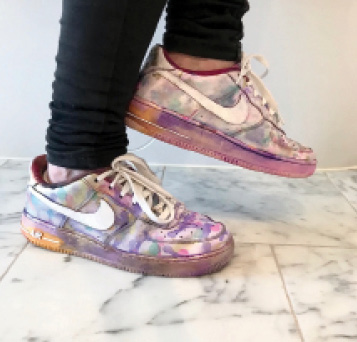
Figure 4. Dr. LaHood’s custom dyed and painted Nike Air Force 1 sneakers.
Skateboarding
A lot of sneaker collectors will never wear their shoes, but one of the roughest things that can be done to a sneaker is another of my hobbies: skateboarding (Figure 5). Eye surgery and skating may seem poles apart, but both require practice and dedication, balance, and a degree of finesse. Skateboarding is like a technical dance routine where your partner is the board. I enjoy learning new tricks, challenging myself, and keeping fit. As I get older, though, my main aim is simply not to break any bones.
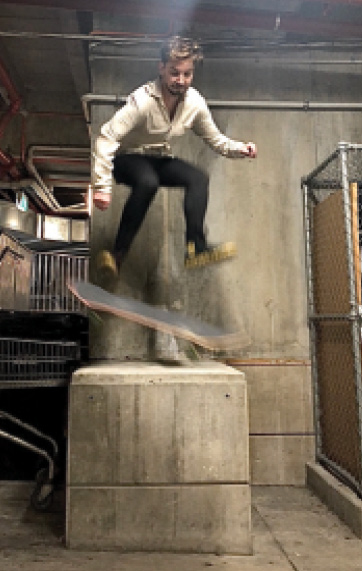
Figure 5. Dr. LaHood skateboarding.
Conclusion
My artistic and sporting hobbies benefit my clinical practice. Not only do they clear my mind of the stresses of the day, but they also give me ideas of new ways to teach concepts or present research findings. Sometimes art and science merge, such as in my stop-motion video on presbyopia-correcting IOL choices for the ESCRS meeting or the cover artwork for my podcast, Ophthalmology Against the Rule. I hope that my story inspires others to do the things they want to do both within and outside the ophthalmology clinic. Let’s live a life less ordinary.



